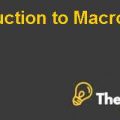
Roppongi Hills: City within a City
Art Museum Issues
Minoru Mori, CEO of the Mori Building was thinking about the future expectations of the Art Museum positioned on the top floor of the Roppongi Hills. Other than the Art Museum, all of the different businesses at Roppongi Hills were somehow doing an excellent job in terms of profit making and expansions. The Art Museum was again and again making losses, at a velocity of close to ¥1 billion or near to $9 million each year. The project was not that much old so museum that it could be made profitable by using some strategies and business approaches. Using the Boston Consulting Group Matrix, the museum can be rated at “DOGS”.
Product rated as dogs always have a pathetic market share in a market. These products are very likely result in a loss or earn very low profits. These products or services can be a gigantic drain on management time and resources, which results in incurring a huge loss if necessary actions are not taken.
The aim of Minoru Mori, CEO of the Mori Building was to relate this museum from different cultural aspects. This desire resulted in having major cost because opening and running a museum was more costly on a high floor, predominantly when exhibitions habitually changed and bigger items had to be elevated to and then brought back from the top floor. Mr. Nanjo, the Deputy Director of the Art Museum put in plain words that they have positioned themselves as a friendly and service oriented museum by having a deep focus on modern art. Being different from other modern and sometimes fake art museums, they are open in the evenings and have more than enough parking spaces, and try to appeal to the general public. They believe that they do not have any competition and they are quiet diverse from their closest rival that is, Shibuya’s Bunkamura.
In the initial year, the museum attracted 2.2 million visitors, thanks in part to the fame of the observation deck. In the next two years, the number of guests shrank to 2 and 1.8 million, correspondingly. Another reason of placing it into Dog category is that the museum’s revenues, which comprises of sponsorship fees, ticket sales, and donations, did not surpass its expenses even. The museum faced a loss of approximately to ¥1 billion a year.
Recommended action
Since the CEO of the museum wants the positioning to base on the cultural aspects so defiantly closing the museum cannot be a workable option. First of all, they need to reduce the cost so that a maximum number of people can visit the museum. Furthermore, the transportation cost for the goods can be reduced because when the museum is situated near to the ground floor so it will reduce the transportation cost of the goods because the items at museum needs to be updated after every quarter and sometimes exhibitions also place, so some heavy arts works need to be transported to museum that is a costly procedure. The space of the current museum can be allocated to a cheap market place so that more and more people can be attracted. Furthermore, a Global Arena having the traditional items of different countries across the globe can be opened to gain attraction of both national and international audience.
What exactly are the “synergies” created by Roppongi Hills that M. Mori is referring to on page 4 of the case?
*Differentiation-emphasis of a unique benefit or component of a product that separates that product from competitors.
Minoru Mori, CEO of the Mori Building has the vision to build an extraordinary prototypical city. He aims to develop ‘a cultural heart for Tokyo’ which was actually the main perception for the city when Roppongi Hills was made. Roppongi Hills would be consisting of the following elements.
- High quality residence
- Work places
- Shopping relaxing
- Studying
- Art and design facilities
- Museum
It was supported by his confidence that residences, offices, entertainment, shopping, and cultural amenities could not only co-exist in closeness, but also that synergies could be established in such a multi-dimensional mission. Minoru Mori decisively believed in maintaining balance between life and work. He said that the Roppongi Hills was the fruit of their experience with Ark Hills.
Roppongi Hills had conventionally been considered as an amusement district and not as a place to work and live. Since the era of 1960s, partly due to its closeness to a U.S. military base, Roppongi Hills had been known for its vigorous night scene with several bars, restaurants, hostess clubs, nightclubs, and nightspots that were grabbing the Westerners. As of today, it was differentiated by a comparatively huge presence of Western visitors or tourist, who are employed in the foreign embassies and overseas .............................
This is just a sample partial case solution. Please place the order on the website to order your own originally done case solution.












